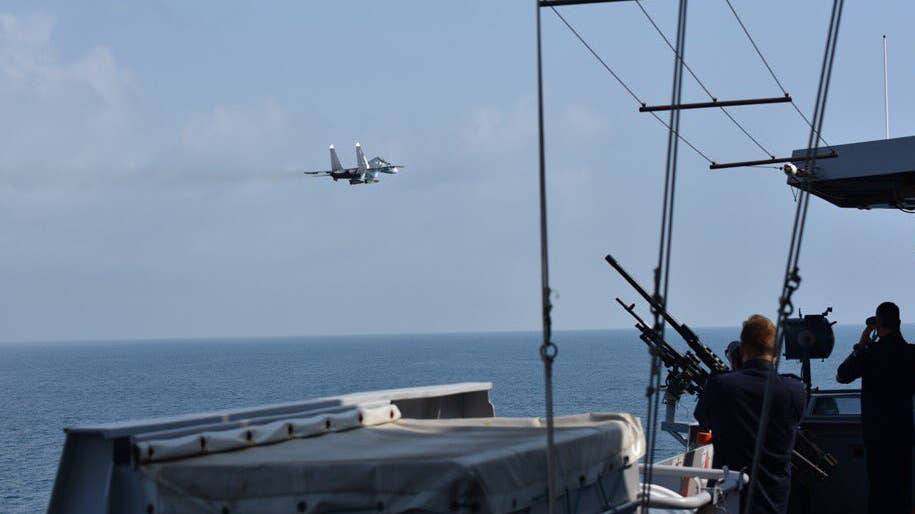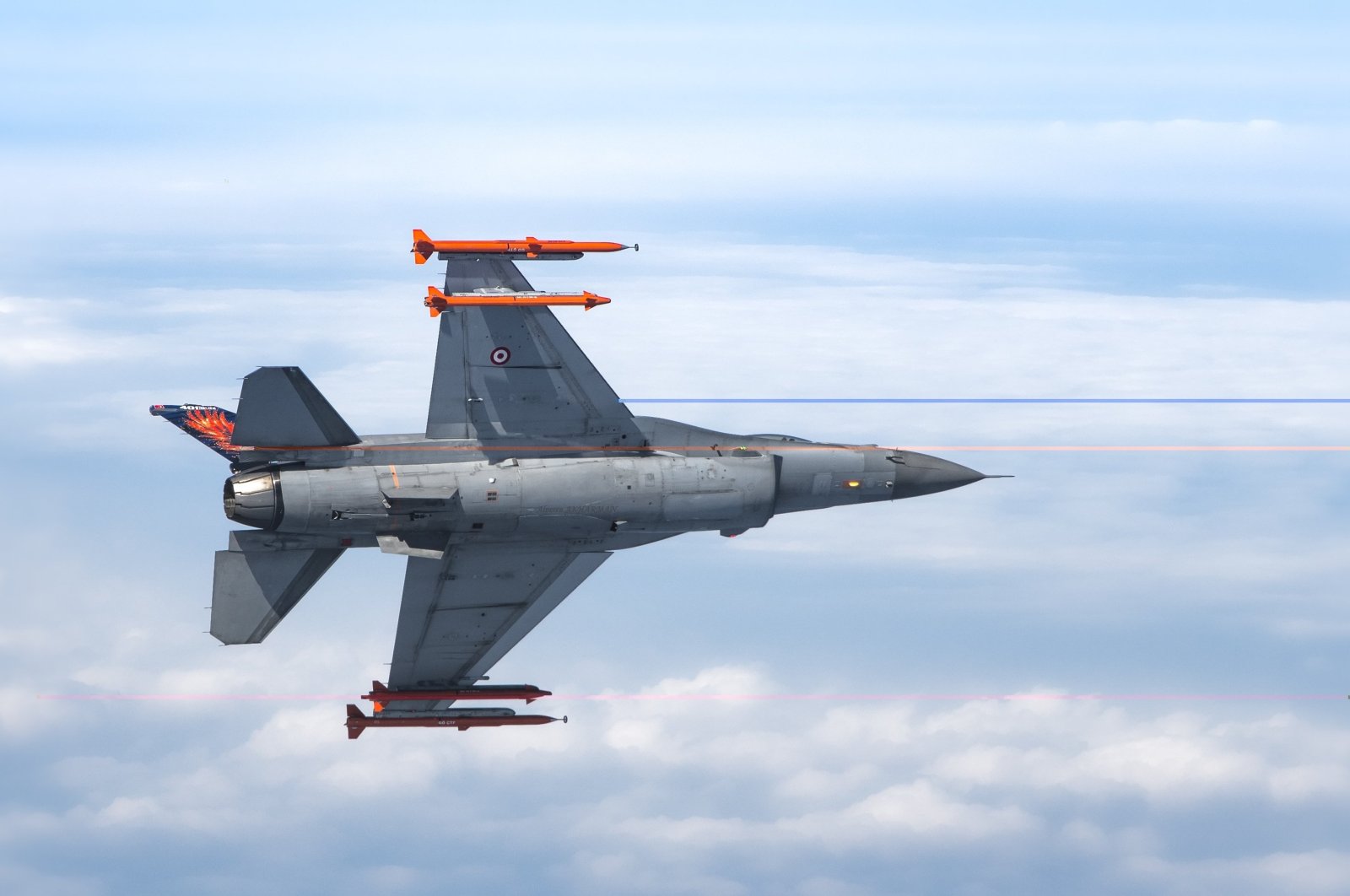The Black Sea Fleet of the Russian military has started arming its Su-30SM fighter jets with X-31 supersonic missiles as part of what Moscow described as a special military operation in Ukraine, reported TASS.
The report described these missiles as highly effective in the ongoing war. “The Black Sea Fleet is using X-31 guided missiles known in the West as Krypton on its Su-30SM jets,” the report said, citing sources.
Until then, there had been no official reports of airstrikes using Su-30SM equipped with X-31 missiles. But, TASS has yet to receive an official response on the matter.
The X-31 or Kh-31, also known to NATO as the AS-17 Krypton, is a Russian air-to-surface missile carried by aircraft. It can travel at a speed of Mach 3.5 and was the first Russian supersonic anti-ship missile that could be fired from a tactical aircraft. The Zvezda Design Bureau designed the missile.
The first Kh-31 was test-fired in 1982, and the Soviet Union started using the weapons in service in 1988. The initial anti-radiation variant, the Kh-31P, and the subsequent anti-ship variant, the Kh-31A, made their first public appearances in 1991.
Russia ‘Smokescreens’ $3.7B Kerch Bridge As US Says Ukraine Can Strike Europe’s Longest Bridge
At the end of June, the Dutch Ministry of Defense stated that Su-30SM aircraft armed with Kh-31 missiles conducted mock attacks on the Royal Netherlands Navy frigate HNLMS Evertsen in the Black Sea.
Russian Naval Aviation Su-30SM is visible in pictures released by the Dutch MOD, flying low and close to Zr. Ms. Evertsen. Two Kh-31 missiles appear to be carried by at least one Russian aircraft.

The Kh-31s are outfitted with a rocket-ramjet propulsion system that allows them to travel at sustained supersonic speeds. The air-breathing ramjet can take control of the weapon by speeding it up with a rocket in the rear.
With its high-altitude flight profile, the Kh-31P can reach speeds of up to Mach 3.5. The sea-skimming Kh-31A can still travel at a speed of 2.5 mph.
The missile can be equipped with MiG-29K, MiG-29M, MiG-29SMT, MiG-29UBT, MiG-31, Su-24M, Su-25T, Su-30MK, and Su-35 aircraft, according to the Rosoboronexport.
The missiles use terminal homing and mid-course radar guidance. The Kh-31A is outfitted with the ARGSN-31 active radar guidance system, which is jam-resistant and can distinguish the target from a large, homogenous group.
The Kh-31P uses a passive radar guidance system with a wide frequency range. Its seeker can function in various homing modes, including automatic search and external control modes. The missile can execute an evasive 10-g pull-up maneuver if exposed to enemy radar.

Turkey Tests Its Homegrown Air-To-Air Missile
Meanwhile, Turkey’s efforts to advance its domestic defense industry are progressing steadily. The nation’s defense and aviation firms have made significant R&D, production, and export advancements over the past few years.
On July 10, Ismail Demir, the head of the Presidency of Defense Industries (SSB), announced that Turkey had successfully tested its homegrown beyond visual range air-to-air missile (BVRAAM), Gökdoğan.
The development of this missile is carried out by the Scientific and Technological Research Council of Turkey (TÜBİTAK) Defense Industries Research and Development Institute (SAGE) as part of the Göktuğ project.
“Gökdoğan will hit the invisible! Within the scope of our Göktuğ project, our Gökdoğan Beyond Vision Missile, one of our national air-to-air missiles, fired with a radar seeker, and another important step has been completed,” Demir tweeted.
1️⃣ GÖKDOĞAN görülmeyeni de vuracak!
GÖKTUĞ Projemiz kapsamında testleri süren milli hava-hava füzelerimizden #GÖKDOĞAN Görüş Ötesi Füzemiz, radar arayıcı başlıkla atışını gerçekleştirdi ve önemli bir aşama daha tamamlandı. ?
➡️ @SageTubitak pic.twitter.com/GXvM4LPV8a
— Ismail Demir (@IsmailDemirSSB) July 10, 2022
He added that the Turkish Armed Forces would receive the Gökdoğan and Bozdoğan missiles by the end of the year. He lauded it as a holiday gift to the nation. Bozdoğan is an air-to-air in-sight missile that Turkey tested in April 2021, as previously reported by the EurAsian Times.
Turkey has joined a select group of nations that possess “air-to-air missile technology with Gökdoğan and within visual range air-to-air missiles (WVRAAM) with Bozdoğan,” according to the Daily Sabah.

Beginning in 2013, SAGE began developing air-to-air missiles. Bozdoğan is being developed as a long-range, active radar seeker missile, whereas Gökdoğan is being developed as short-range, high maneuverability, infrared seeker missile.
After being unveiled at the International Defense Industry Fair (IDEF) in May 2017, both the missiles performed ballistic launches from the ground. The effectiveness of the rocket engines in these tests was evaluated, along with the weapons’ capacity to obliterate targets without guidance.
Both missiles are outfitted with high thrust-low smoke solid-fuel technology, a full electronic rocket engine, reliable and safe start and ignition systems, and a continuous fuse for maximum safety and reliability.
Turkey’s aspirations to become a significant exporter of military hardware are receiving a major boost from its expanding defense industry.
- Contact the author at ashishmichel@gmail.com
- Follow EurAsian Times on Google News




